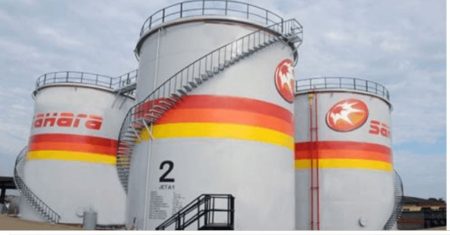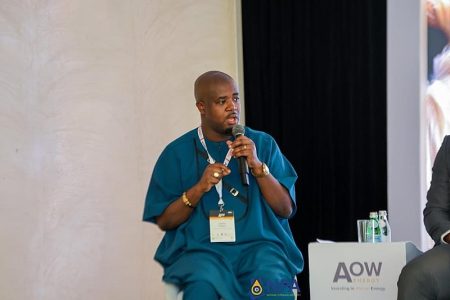Owoeye Johnson, the co-founder and executive director of Sysserve, a facility management software company, has urged businesses to adopt intelligent platforms to improve the sustainability of their facility management practices. His call to action came during a presentation at a recent International Facility Management Association Global Africa conference, a gathering designed to foster networking, learning, and innovation within the facility management industry. Owoeye highlighted Sysserve’s 13-year track record of assisting organizations across various sectors in achieving their digital transformation goals within facility management. He emphasized that companies exist at different stages of digital maturity, ranging from those with virtually no digital presence to those operating highly sophisticated, intelligent systems.
Owoeye introduced a digital maturity model, drawing from frameworks developed by Deloitte and McKinsey, which offers organizations a tool to assess their current digital standing and chart a roadmap towards achieving full digital maturity. He categorized organizations into five distinct levels: non-existent, nascent, emerging, connected, and intelligent. The “non-existent” level represents organizations lacking centralized record-keeping, relying on manual processes and data silos. These organizations often experience slow, reactive decision-making based on guesswork rather than data. Owoeye stressed the critical first step for such organizations is implementing a central record-keeping system.
The “nascent” level describes organizations that possess a system but underutilize its potential. While a system exists, it primarily serves as a basic record-keeping tool, with other operations still dependent on manual processes. Owoeye noted that these organizations often claim to have a system in place, while in reality, it fails to contribute significant operational value. “Emerging” organizations, on the other hand, actively utilize their facility management systems to drive operations. However, their processes remain heavily reliant on human intervention, making them susceptible to errors, delays, and compromised reporting quality.
Organizations in the “connected” category leverage the Internet of Things (IoT) by integrating sensors that capture real-time data on various aspects, including energy consumption, equipment usage, temperature, humidity, and space occupancy. This data integrates with other enterprise applications, automating processes like vendor payments, procurement, and financial reporting. While this level generates a substantial volume of data, the challenge lies in effectively analyzing and converting this information into actionable insights for informed decision-making and sustainability initiatives.
The pinnacle of digital maturity, according to Owoeye, is the “intelligent” level. Here, artificial intelligence (AI) is deeply embedded within every layer of facility management operations. Generative AI and big data analytics play crucial roles in supporting planning, budget forecasting, and resource allocation. These organizations achieve a level of operational autonomy, where IoT sensors and AI drive a self-running system. Achieving this level of sophistication represents a significant advancement in facility management, enabling proactive, data-driven decisions and optimized resource utilization.
Femi Kareem, a facility management professional based in Abuja, further elaborated on the concept of an intelligent platform during the conference. He defined it as an integrated digital solution that gathers, analyzes, and acts upon data from diverse sources to optimize operations. Kareem emphasized the focus on resource efficiency across energy, water, space, and vehicle usage, highlighting its contribution to reducing emissions, waste, and costs while promoting automation and AI-driven solutions. This comprehensive approach showcases the potential of intelligent platforms to transform facility management practices and drive sustainable outcomes.
Owoeye concluded his presentation by emphasizing that building an intelligent facility management system that prioritizes sustainability is a progressive journey, not a sudden leap. He stressed the importance of strategic planning, continuous improvement, and sustained investment in achieving this goal. Each step taken towards digital maturity brings organizations closer to a smarter, more environmentally responsible, and sustainable future. The imperative, he urged, is to embark on this transformative journey without delay. The adoption of intelligent platforms, driven by data and AI, represents not just an evolution in facility management but a crucial step towards a more sustainable and efficient operational model.
The transition towards digitally mature facility management offers a significant opportunity for organizations to optimize their operations, enhance resource efficiency, and contribute to a more sustainable future. By embracing intelligent platforms, businesses can move beyond reactive maintenance and embrace a proactive, data-driven approach to facility management. This shift not only optimizes resource allocation and reduces costs but also minimizes environmental impact, aligning with growing global concerns about sustainability. The integration of AI and IoT technologies empowers organizations to achieve a level of operational efficiency previously unattainable, marking a pivotal moment in the evolution of facility management.
The five stages of digital maturity outlined by Owoeye provide a valuable framework for organizations to assess their current capabilities and chart a course towards intelligent facility management. The progression from basic record-keeping to AI-driven automation represents a significant transformation, requiring strategic planning, investment, and a commitment to continuous improvement. As organizations advance through these stages, they unlock increasing levels of efficiency, data-driven decision-making, and sustainability. This journey, while demanding, offers substantial long-term benefits, positioning organizations for success in an increasingly competitive and environmentally conscious landscape.
The insights shared by Owoeye and Kareem underscore the transformative potential of intelligent platforms in facility management. By leveraging data, AI, and IoT technologies, organizations can optimize resource utilization, reduce costs, and minimize their environmental footprint. This holistic approach to facility management not only improves operational efficiency but also aligns with broader sustainability goals, contributing to a more responsible and sustainable future. The time to embrace this transformative technology, as Owoeye emphasized, is now.
The adoption of intelligent platforms marks a significant step towards creating smarter, greener, and more sustainable built environments. As organizations embark on this journey towards digital maturity in facility management, they are not only optimizing their operations but also contributing to a more sustainable future for all. The integration of data, AI, and IoT technologies empowers organizations to make more informed decisions, automate processes, and optimize resource allocation, ultimately leading to a more efficient and environmentally responsible approach to facility management.














